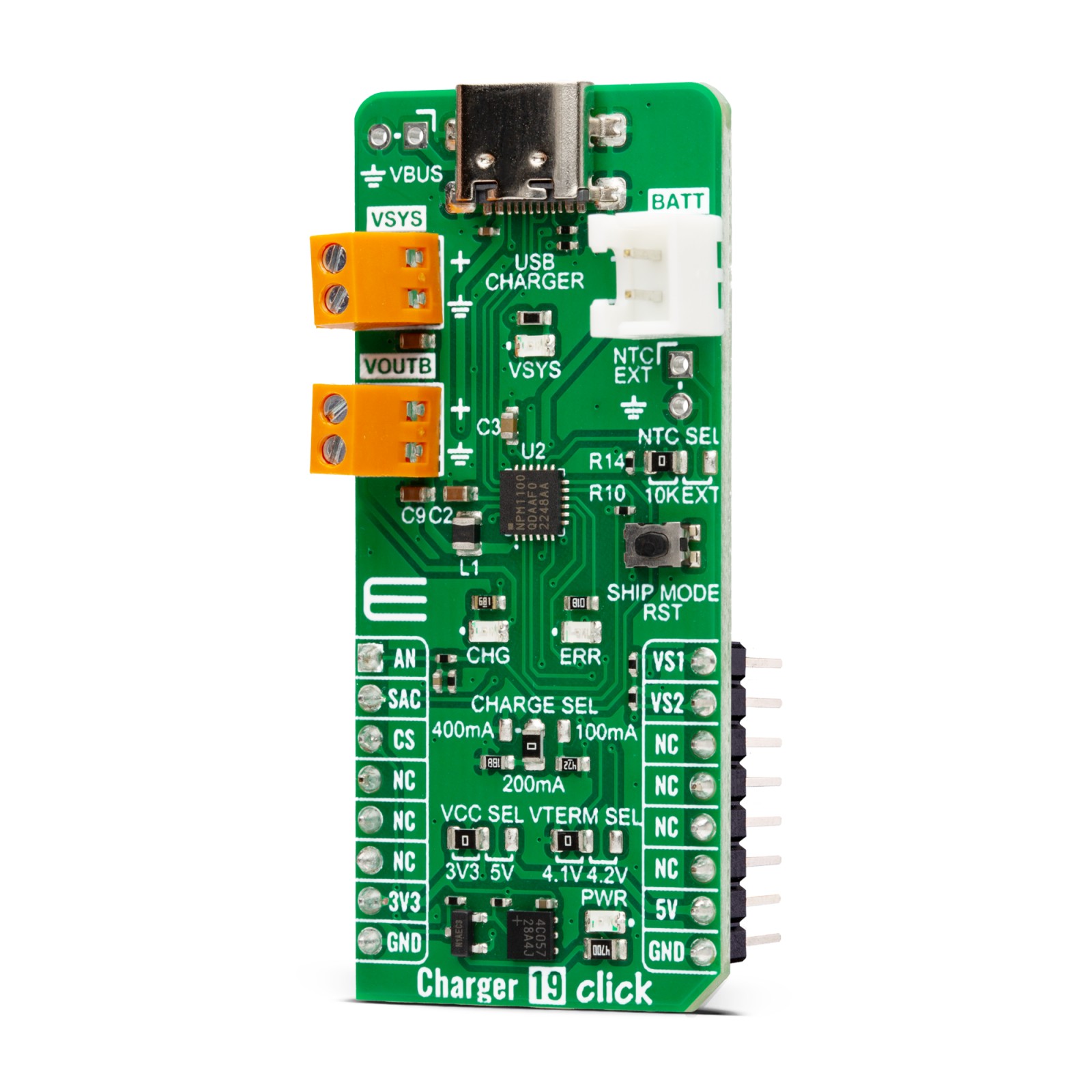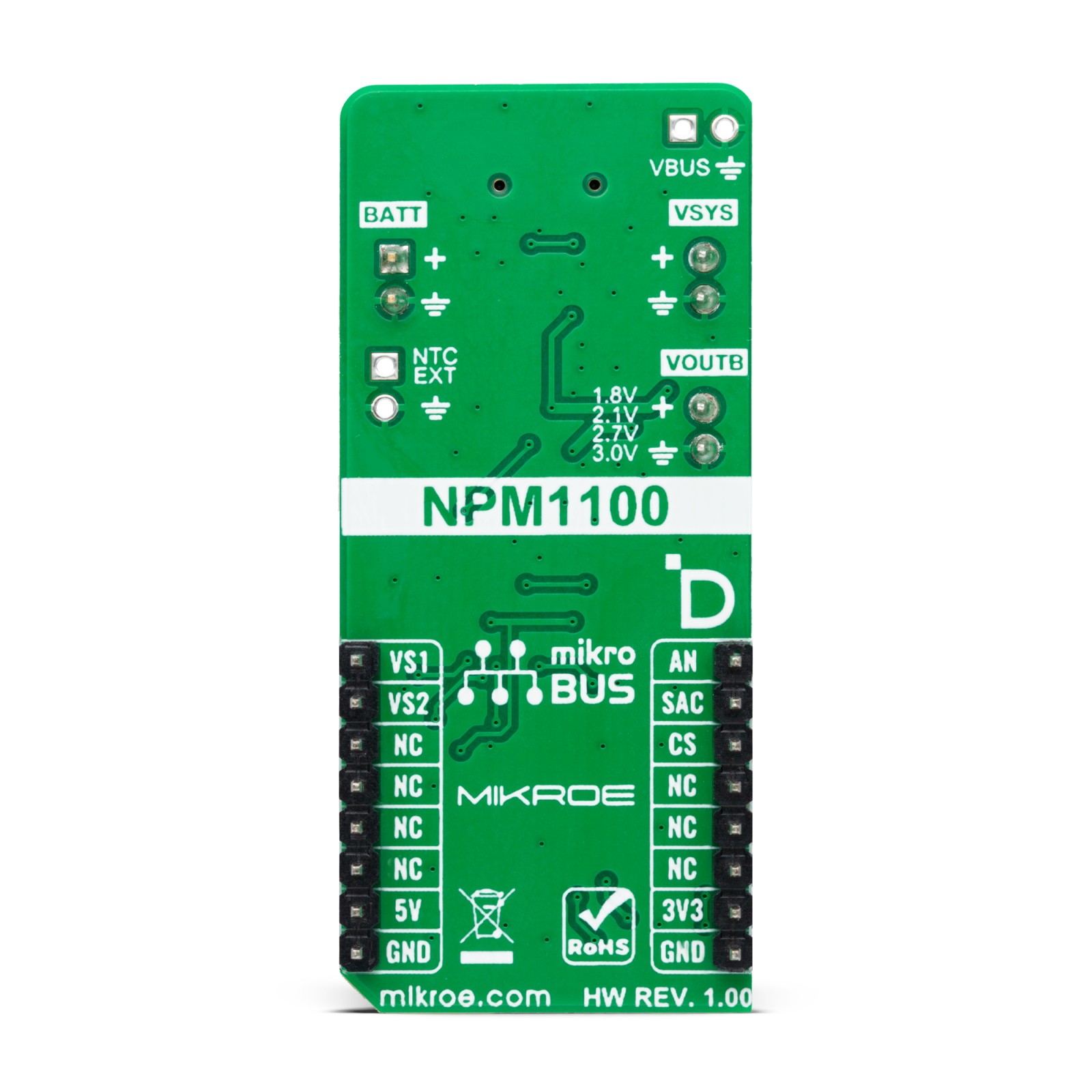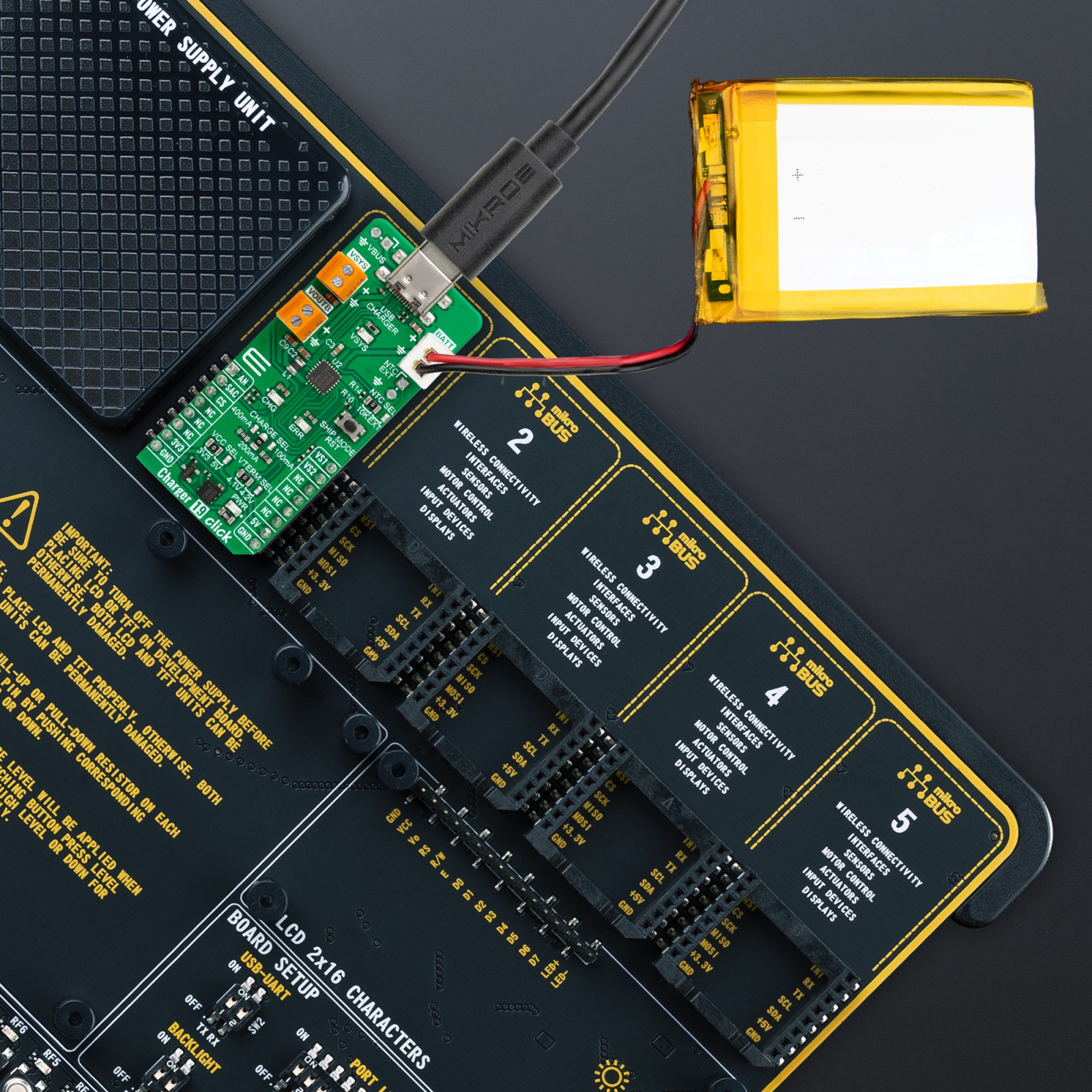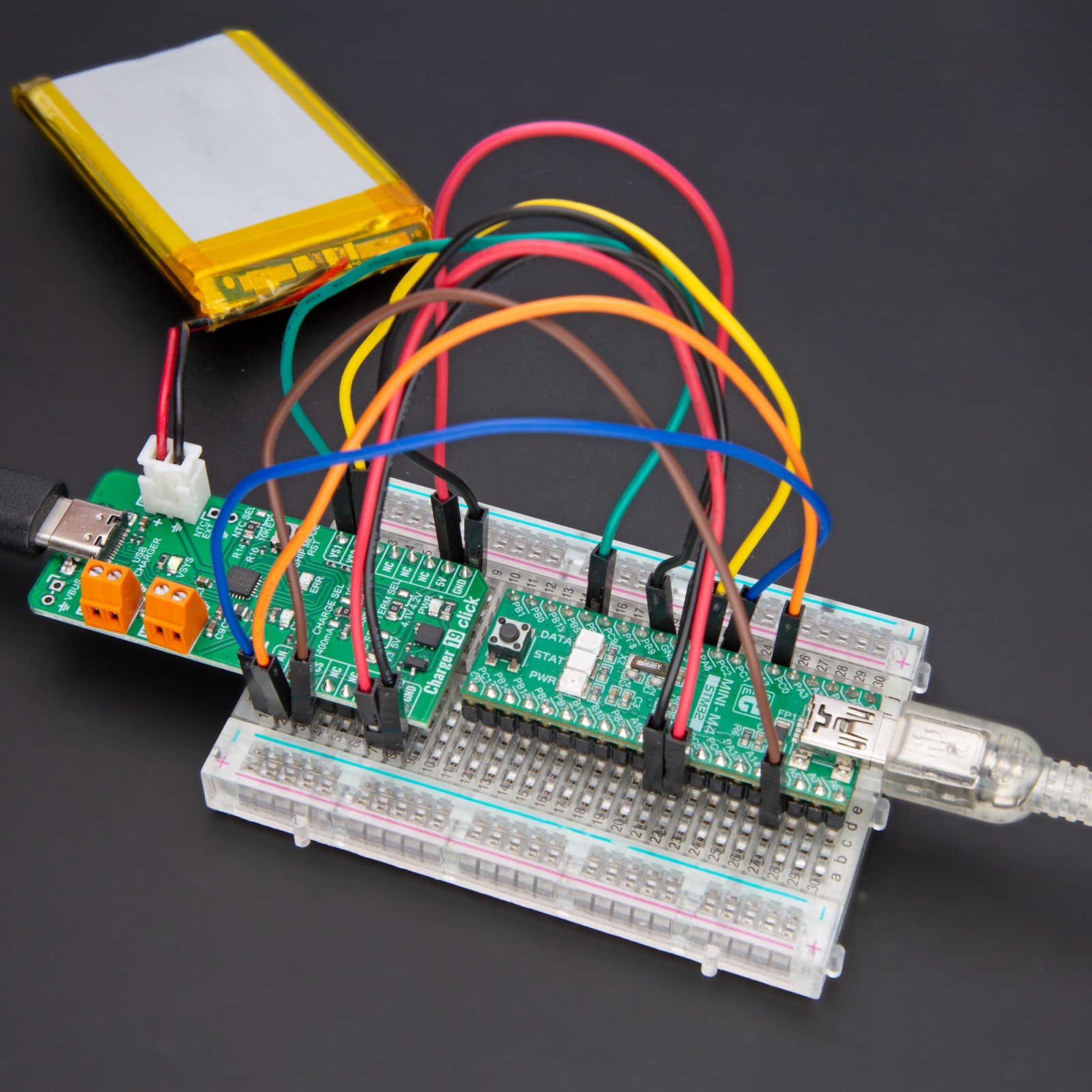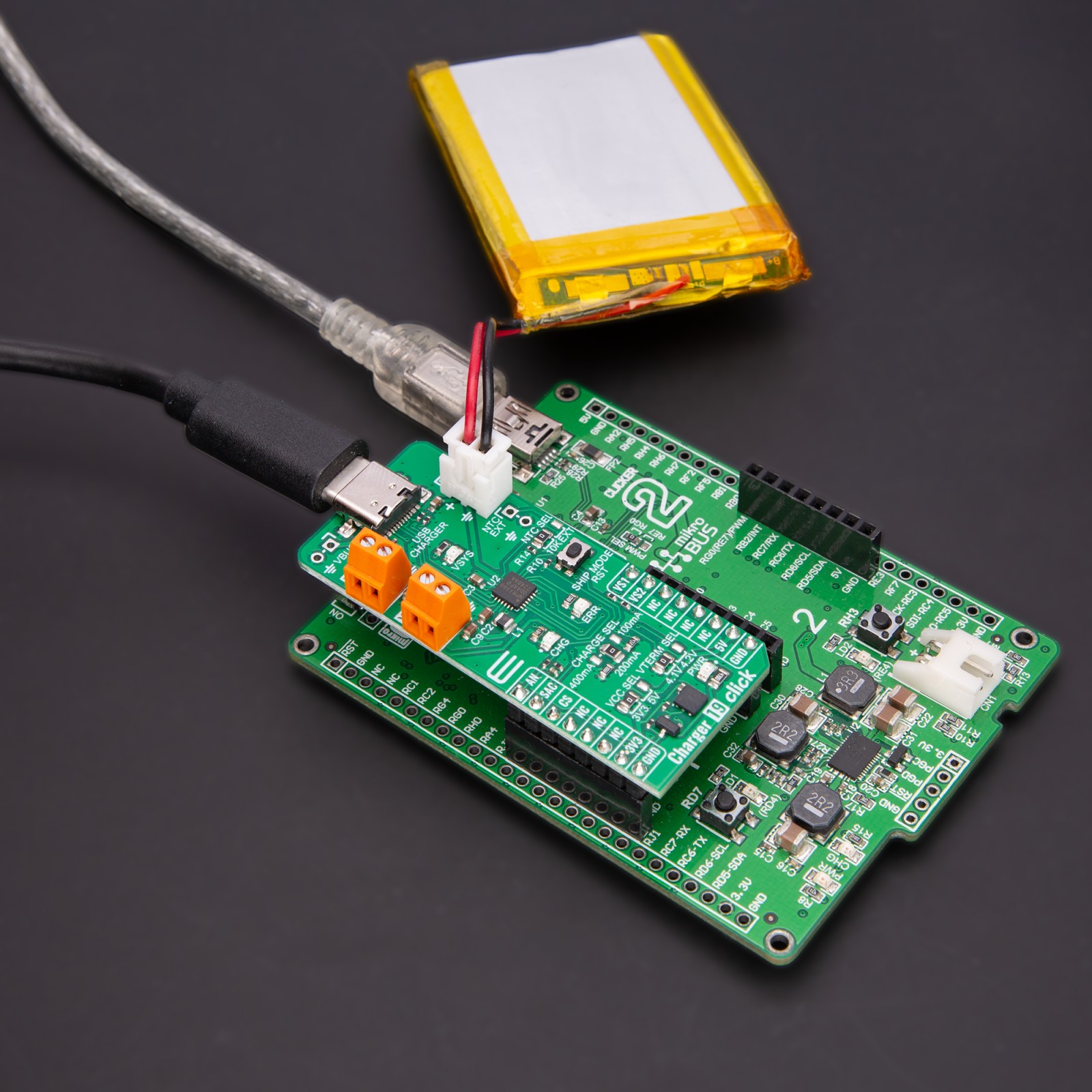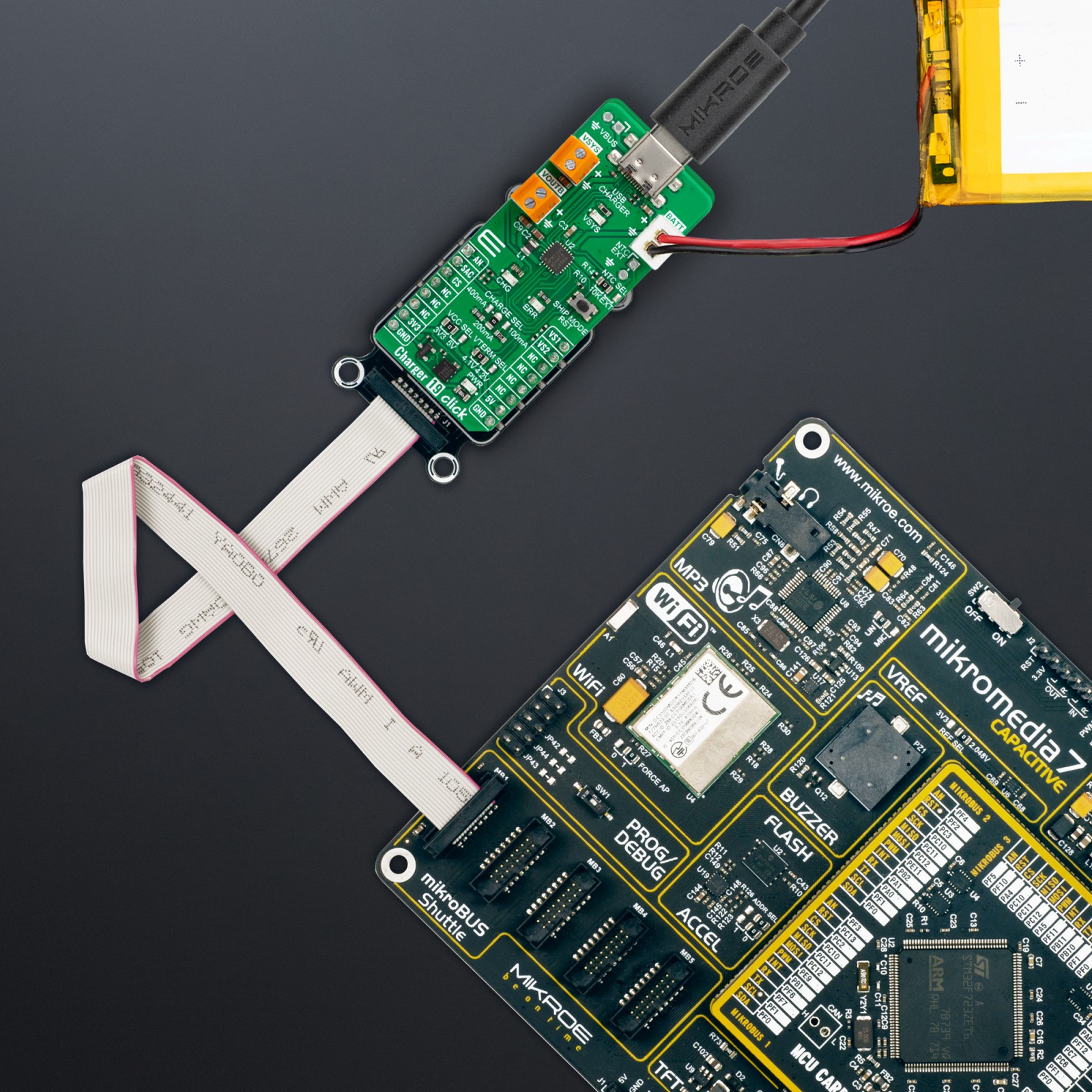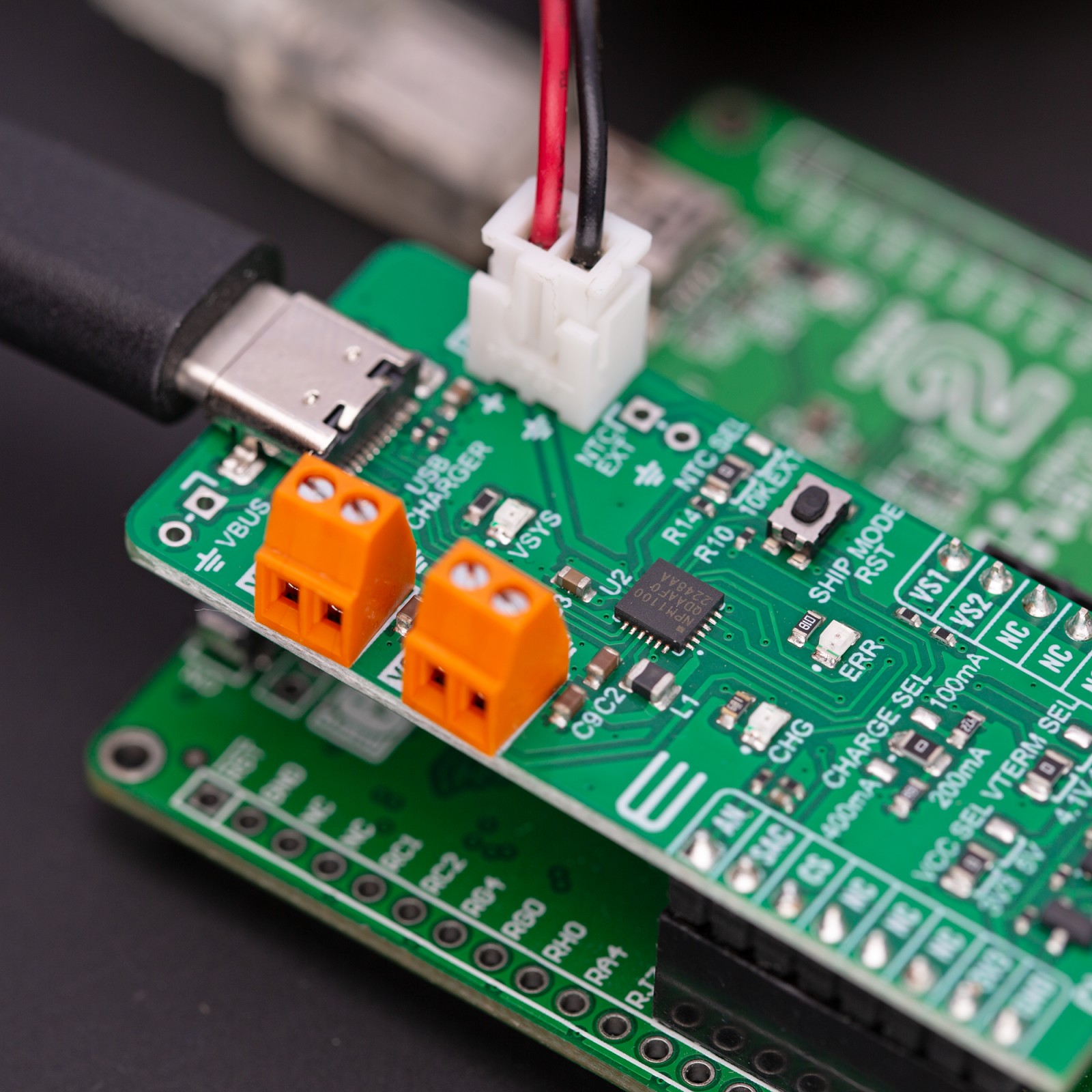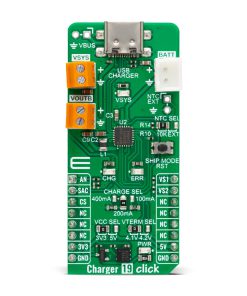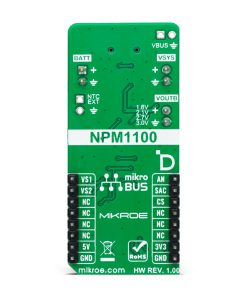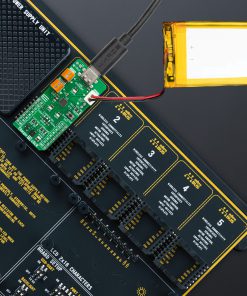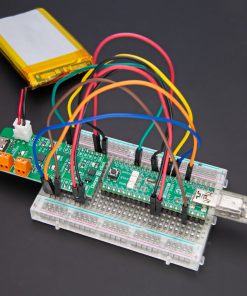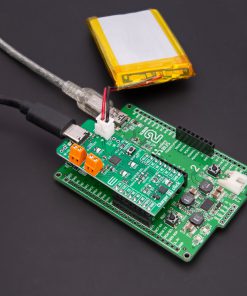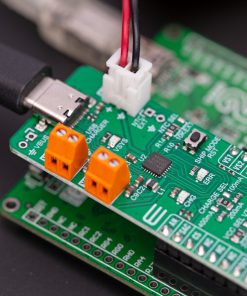Charger 19 Click
R425.00 ex. VAT
Charger 19 Click is a compact add-on board that contains a battery charger. This board features the nPM1100, an integrated power management IC from Nordic Semiconductor. It has a highly efficient DC/DC buck regulator with automatic selection between hysteretic and PWM modes. The nPM1100 has automatic USB port detection and features discharge current limitation, battery thermal protection, automatic trickle, constant current, and constant voltage charging. This Click board™ makes the perfect solution for developing Li-Ion/Polymer battery chargers for portable devices and accessories, power tools, and more.
Charger 19 Click is fully compatible with the mikroBUS™ socket and can be used on any host system supporting the mikroBUS™ standard. It comes with the mikroSDK open-source libraries, offering unparalleled flexibility for evaluation and customization. What sets this Click board™ apart is the groundbreaking ClickID feature, enabling your host system to seamlessly and automatically detect and identify this add-on board.
Stock: Lead-time applicable.
| 5+ | R403.75 |
| 10+ | R382.50 |
| 15+ | R361.25 |
| 20+ | R347.65 |


